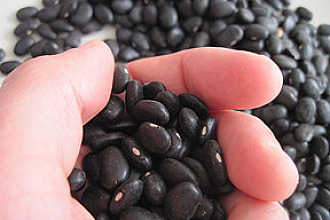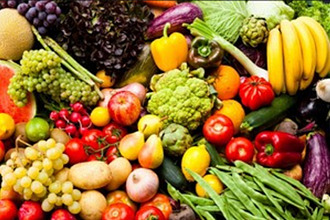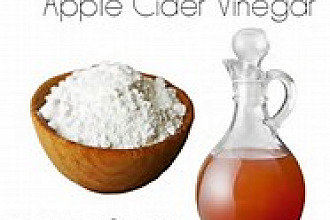A study published in Agricultural Economics reported that women who read nutrition labels weigh an average of eight pounds less than those who don’t.
In the world of healthy eating, learning to read a nutrition label is a necessary task. Foods, even healthy looking foods, often harbor dark (fatty, salty, or chemical-ly) secrets. Nutrition labels can be our best available defense for identifying and avoiding unhealthy foods.
In the rest of this article, we’ll break the nutrition label into manageable pieces and give you tips on what to look for and what to avoid. A nutrition label may seem daunting at first—there is a lot of information packed into a small space—but soon enough you’ll be reading them like a pro.
Serving Size
Gracing the top of the Nutrition Facts label, the serving size is one of the most vital pieces of information. Serving sizes differ between products (sometimes widely) and it is very common to eat more than the serving size. Without an accurate understanding of serving size, the rest of the information on the label won’t do you much good.
For example, a serving of Doritos may only have 140 calories—but the serving size is 1 ounce—about 11 chips. Seriously, who eats only 11 chips? Before you bother looking at the calories, fat content, sodium, or anything else, you need to check the serving size. Depending on how much you plan to eat, you’ll need to multiply or divide accordingly.
Calories
Beneath the serving size, you’ll find the amount of calories per serving. Although this is first place most people look when checking out a nutrition label—it is not necessarily the most important. ‘High calorie’ does not always mean ‘unhealthy’.
Calories are simply a way to measure energy. (See our article “What’s in a Calorie” for a more complete explanation.) Our goal should be to obtain our energy (calories) from healthy, nutrient-dense sources. Calories from nutritious whole grains are a completely different thing than the ‘empty’ calories from sugar. The rest of the nutrition label will give you great information about the type of calories present in a certain food.
Tip: When evaluating the calorie count, be sure to check the ‘Total Carbohydrate’ section of the nutrition label. See that section of the article for more details.
Calories from Fat
Besides listing the total calorie count, all food labels must also include the number of calories that come from fat. Compare the two numbers to see where your calories are coming from. For example, if you see a food that has 120 total calories and 40 calories from fat, you’ll know that fat accounts for one-third of the calories in that product. The 2010 Dietary Guidelines for Americans recommend consuming between 20 – 35 percent of your total daily calories from fat.
Total Fat
On a nutrition label, ‘total fat’ includes all types of fat in a product—unsaturated, saturated, and trans fats. Unsaturated fats are considered to be the ‘healthy fats’. They are predominantly found in plant-based foods and oils. In studies, unsaturated fats have been shown to have many health benefits such as reducing the risk of heart disease or type 2 diabetes.1
On the other hand, saturated fat and trans fats tend to come from animal products. Saturated fat has been shown to raise blood cholesterol levels and increase your risk of developing type 2 diabetes.2 Trans fat has been shown to be especially damaging to health and is known to raise ‘bad’ (LDL) cholesterol levels while lowering ‘good’ (HDL) cholesterol levels.
Because of their negative properties, food manufacturers are required to show how much fat in a product comes from saturated or trans fat. Avoid any product with high amounts of saturated fat. If a product has any trans fat, put it back on the shelf and look for a different product.
Note: There’s a bit of a catch here. A labeling loophole actually allows a product to contain up to 0.5g of trans fat while still saying it has none. So how do you know if the nutrition label is telling the truth? Check the ingredients list: if you see ‘partially hydrogenated’ oil, the food contains trans fat.
Cholesterol
Cholesterol is a necessary element in the body’s cell membranes. Our bodies naturally produce all the cholesterol we need. Because our bodies don’t need any extra, consuming cholesterol is harmful. Over time it can lead to heart disease and stroke. Cholesterol intake should be reduced to as little as possible.
Thankfully, avoiding cholesterol is easy. Because dietary cholesterol is found only in animal products such as meat, milk, and eggs, all plant-based (vegan) recipes or products are naturally 100 percent cholesterol free!
Sodium
While some sodium is necessary for our bodies to function, a high-sodium diet is a major risk factor for high blood pressure and poor heart health. The CDC recommends that adults should consume no more than 2,300 mg a day. However, that recommendation drops to 1,500 mg a day for anyone who is over the age of 50, is an African American, or has high blood pressure, diabetes, or chronic kidney disease (combined, these groups constitute 50% of the adults in the United States).
So how do you identify a low-sodium food? Here’s a good rule of thumb to follow. A low-sodium food will have less than one mg of sodium per calorie. For example, a food containing 100 calories should have less than 100mg of sodium. If you must consume a high-sodium dish—just make sure to balance the dish out throughout the day by eating plenty of fruits and vegetables, which are naturally very low in sodium.
Total Carbohydrate
This section lists the total amount of carbohydrate per serving, including starches and sugars. It is recommended that people obtain 45 – 65% of their daily calories from carbohydrates.
The two subcategories in the total carbohydrate section (dietary fiber and sugars) are very useful in determining the quality of calories in a food product. High fiber content is an excellent indicator of nutritious whole grains. Among other things, fiber helps keep blood sugar from spiking, aids in weight loss, and is important for the excretion of waste. Try to buy high-fiber foods whenever possible. On average, women need to consume 25g of fiber while men need 38g. As a rule of thumb, the Institute of Medicine recommends getting at least 14g for every 1,000 calories.
Looking at the amount of ‘sugars’ in a food is somewhat helpful in gauging the healthfulness of a food. The problem is that this number does not distinguish between naturally occurring sugars or added sugars. In general, you should be wary of high amounts of sugar (unless you are eating a whole food such as an apple or mango).
In any processed food, your best bet is to check the ingredients list. Some common names for added (hidden) sugar include: evaporated cane juice/sugar/crystals, anything ending with “ose” i.e. fructose, dextrose, anything “syrup”, fruit juice concentrates, agave nectar, honey, or molasses.3
Remember, ingredients are listed by weight. This means that the higher up an ingredient is on the list, the more of it there is. Don’t buy products, which have sugar listed as one of their first ingredients. You should also avoid any product with sugar listed under several different names.
Protein
More than just about any other health issue, people seem concerned about getting enough protein. After all, protein is necessary for building and repairing the cells of our bodies. Although getting enough protein is very important, we tend to take it to an extreme. Today, the average American is getting twice as much as they need.4
The fact is, if you eat a balanced diet, it is easy to get all the protein you need. According to the USDA, 10 – 35 % of our daily calories should come from protein. Here’s a good rule of thumb to follow: For every kilogram you weigh, eat .8 gram of protein. For example, if you weigh 80 kg (approximately 175 pounds) you’ll need to eat 64 grams of protein a day to maintain a healthy weight. If you weigh 50 kg (about 110 pounds) you need to eat 40 grams of protein.
Nutrients and Daily Value
Every nutrition label provides a % Daily Value for many of the nutrients that are listed. In addition to the main nutrients listed, companies are also required to give the daily value for 4 other nutrients: vitamin A, vitamin C, Calcium, and Iron. You can use these percentages to help you plan a healthy, balanced diet. Make sure to get enough of the healthy nutrients, such as fiber, vitamins, and minerals; while you limit your consumption of fats, cholesterol, and sodium.
Keep in mind that the percentage is based upon a 2,000 calorie diet. People’s caloric needs vary because of factors such as age, gender, and physical activity. You will need to adjust appropriately depending on your caloric needs. There are many calculators available online to help you estimate how many calories your body needs.Try this one from the Mayo Clinic.
Ingredients
Last but certainly not least, the ingredients list is absolutely one of the most important parts of a nutrition label. Foods shouldn’t contain too many ingredients. When they do, it’s often a sign that they are highly processed and nutritionally deficient. Some people make it a rule to only eat foods containing 5 or fewer ingredients. This is a good rule of thumb, but recognize that not all foods containing more ingredients are bad.
As we mentioned earlier, ingredients are required to be listed by weight (so the first ingredients on the list are the most plentiful). Take a look at the first 3-5 ingredients especially. Are they healthy? Are they highly processed or refined? Is sugar or oil one of the main ingredients? By looking at the key ingredients, you’ll have a relatively good understanding about the healthfulness of the product.
One final thought: If you can’t understand the ingredients list (or it looks like it was written in a different language) it’s probably not something you want to put in your body.
So there you have it, a roadmap to understanding nutrition labels. It may seem difficult (or even a bit overwhelming) but give it a try—it’s really not that hard. Think of the benefits that choosing healthier, more nutritious food will bring you and your family. Soon enough, the few seconds you spend reading a label will seem like second nature.
References:
- Dietary Fats: Know Which Types to Choose.” Mayo Clinic.
- “Dietary Fats: Know Which Types to Choose.” Mayo Clinic.
- USDA. “Dietary Guidelines for Americans 2010.” USDA.
- “Adults’ Daily Protein Intake Much More Than Recommended.” NCHStats.


























